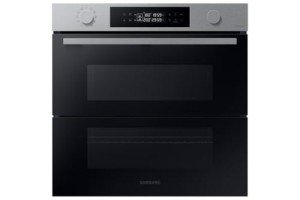What's The Fuss About Built In Oven Uk?
The Rise of Built-In Ovens in the UK: A Comprehensive Guide
Built-in ovens have actually become a necessary feature in contemporary kitchen areas throughout the UK. Integrating style, functionality, and technology, these appliances can boost both the visual and functional elements of cooking spaces. As house owners make every effort for effectiveness, style flexibility, and technological innovation, built-in ovens have become a preferred option. This article will explore the advantages, types, features, and leading brand names of built-in ovens available in the UK, together with a guide to assist consumers make notified choices.
Advantages of Built-In Ovens
Built-in ovens offer many advantages over standard freestanding designs. Here are some of the key advantages:
- Space Efficiency: Built-in ovens can be integrated into kitchen cabinetry, maximizing floor area and developing a seamless look.
- Sleek Design: Available in numerous surfaces and styles, built-in ovens can raise the general aesthetic of the kitchen.
- Multi-Functionality: Many built-in ovens included extra features such as convection, steam cooking, and self-cleaning alternatives.
- Enhanced Accessibility: Positioned at eye level, built-in ovens supply much easier gain access to, reducing the need to bend down, which can be particularly helpful for those with movement issues.
- Boosted Technology: With clever technology combination, lots of built-in ovens allow users to manage cooking time and temperature from their smart devices while providing sophisticated cooking choices.
- Increased Resale Value: Homes geared up with contemporary built-in appliances frequently draw in buyers more easily, potentially increasing residential or commercial property worth.
Kinds Of Built-In Ovens
Selecting the right kind of built-in oven is crucial for meeting specific cooking requirements. Here are the common types:
Type
Description
Single Oven
A basic choice perfect for smaller cooking areas, accommodates one cooking compartment.
Double Oven
Uses two different compartments, permitting simultaneous cooking at various temperature levels.
Compact Oven
A smaller version, best for restricted areas, frequently incorporating multifunctionality.
Steam Ovens
Use steam for cooking, maintaining moisture and nutrients, exceptional for well balanced meals.
Convection Ovens
Circulate hot air for even cooking, decreasing cooking energy and times use.
Combination Ovens
Integrate microwave capabilities, offering flexibility for fast meals or re-heating alternatives.
Secret Features to Consider
When choosing a built-in oven, it's crucial to think about specific important functions that suit private needs. The table below highlights some of the essential features to look for:
Feature
Description
Capability
Measured in litres; choose based upon household requirements and cooking frequency.
Energy Rating
Shows energy efficiency; search for A or higher scores to save money on energy expenses.
Control Options
Options may include knobs, touch controls, or clever technology for convenience.
Cleaning up Type
Consider options like self-cleaning or steam cleansing for easier upkeep.
Service warranty & & Support
Check the guarantee used by the producer for comfort.
Popular Brands of Built-In Ovens in the UK
When investing in a built-in oven, it's a good idea to think about respectable brand names understood for their quality and client assistance. A few of the leading brands available in the UK include:
- Neff
- Bosch
- Miele
- Siemens
- Smeg
- AEG
- Electrolux
- Zanussi
These brand names are acknowledged for their development, dependability, and series of functions, catering to numerous consumer preferences and spending plans.
Setup Tips for Built-In Ovens
Appropriate setup is essential for the performance and security of built-in ovens. Here are some important ideas:
- Professional Installation: Engage a certified electrical expert or installer acquainted with built-in systems to guarantee safety and compliance with UK guidelines.
- Area Planning: Measure cabinet dimensions exactly and consider ventilation needs.
- Inspect Electrical Supply: Ensure the power supply satisfies the oven's requirements to avoid electrical failures.
- Usage Manufacturer Guidelines: Follow the manufacturer's directions for setup to prevent voiding service warranties.
Frequently Asked Questions (FAQs)
1. How do I pick the best size built-in oven?
When picking a built-in oven size, think about the offered kitchen area, your cooking habits, and family size. It's crucial to determine the cabinet area precisely before purchasing.
2. Can I set up a built-in oven myself?
While it's technically possible, it is extremely advised to utilize a professional installer to make sure safety and to adhere to building guidelines, particularly concerning electrical connections.
3. What is the typical cost of a built-in oven in the UK?
The rate of built-in ovens varies extensively depending on functions, capability, and brand name. On average, consumers can anticipate to pay between ₤ 300 to ₤ 2,500.
4. Are built-in Ovens And Hobs -efficient than standalone ovens?
Numerous built-in ovens are developed with energy-efficient innovation, typically ranked higher than standalone designs, making them a much better long-term investment for energy savings.
5. What maintenance is required for built-in ovens?
Routine cleaning, checking seals and gaskets, and making sure ventilation slots are clear are essential for keeping the performance of built-in ovens.
Built-in ovens represent a blend of design, performance, and advanced cooking technology, making them a popular choice among UK property owners. Understanding the benefits, types, and features of these appliances will empower customers to make informed decisions that enhance their cooking experiences. With various reliable brands available and an increasing focus on energy efficiency and wise innovation, the future of built-in ovens looks brighter than ever in the UK kitchen landscape.
